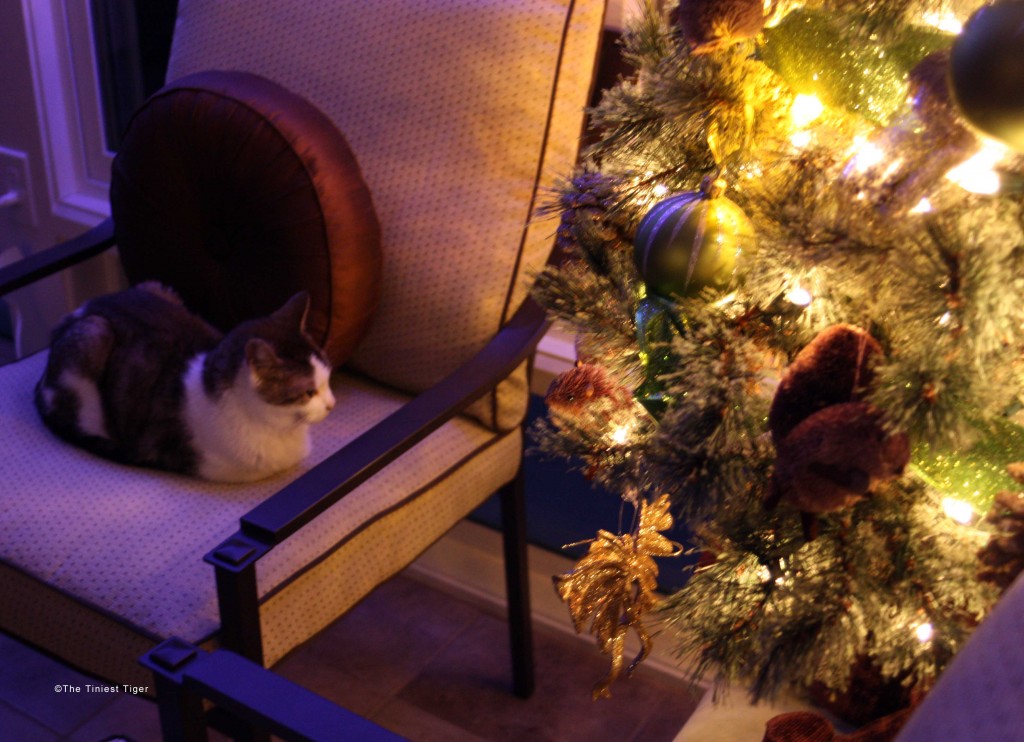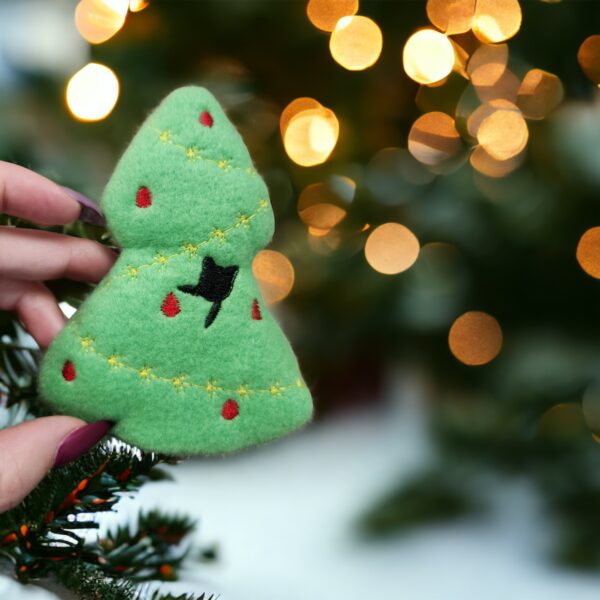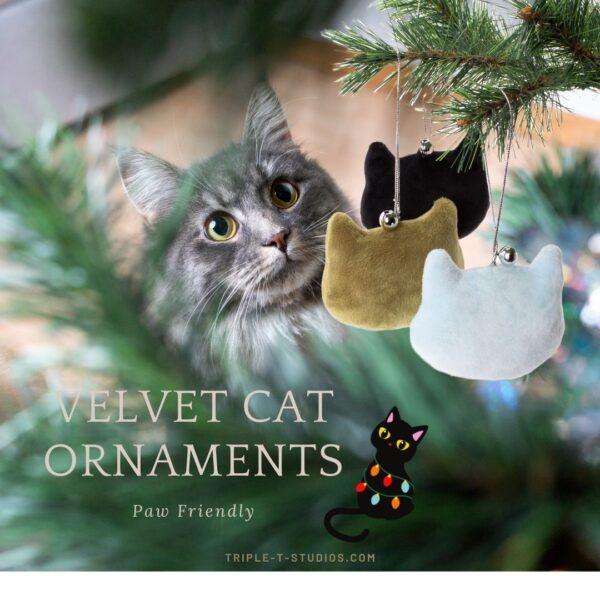
Are Christmas Trees Toxic to Cats?
As the holiday season approaches, many cat owners find themselves admiring their beautifully decorated Christmas trees. However, it is not uncommon for curious cats to be drawn to these festive displays, attempting to take a bite out of the tree. It is essential for cat parents to be aware of the potential risks that Christmas trees may pose to their kitty and take the necessary precautions to ensure their cat’s safety during the holiday season.
We have not had a big decorated tree since Annie and Eddie came to live with us. We do love having a Christmas tree but we love the cats more. Annie is a very curious and ornery cat and we could not take the stress of worrying about her night and day. Eddie is more sly in his curiosity but that is equally worrisome.
For our friends with cats and Christmas trees I know you are looking out for your cat’s safety. By understanding the potential dangers and being proactive, we can have a fun and safe holiday experience for the whole family.
Key Takeaways
- Christmas tree safety is a concern for cat owners
- There are potential risks associated with both real and artificial Christmas trees
- Understanding hazards and taking precautions can help ensure a safe holiday for cats
Are Christmas Trees Hazardous to Cats?
Tree Substances and Sap
Christmas trees contain terpenes, like pinene, which can be harmful to cats. These substances are responsible for the distinctive scent of pine trees. Cats can show signs such as lethargy, vomiting, diarrhea, lack of appetite, muscle weakness, drooling, and unusual breathing if they consume any part of the tree or its sap.
Sharp Needles
Pointy pine needles can cause damage to a cat’s intestinal lining if ingested, potentially leading to internal injury.
Tree Water
To maintain the freshness of Christmas trees, water is essential, and sometimes preservatives are added to prolong the tree’s lifespan. If a cat consumes this chemical-laced water, it could become ill. Additionally, pine needles and sap may contaminate the water, posing further risks to cats. Infrequent water changing can lead to bacterial growth or mold formation, which can also be detrimental to cats if ingested.
Fertilizers and Chemicals
Some Christmas trees may be exposed to fertilizers, pesticides, and preservatives before being purchased, posing additional threats to cats if consumed. To keep cats safe, it’s crucial to monitor their interactions with Christmas trees and promptly address any signs of illness.

Are artificial Christmas trees harmful to cats?
Artificial trees can be a safer option for cats compared to real pine trees. Although they aren’t entirely risk-free, the possibility of hazards is considerably lower. Potential dangers for cats regarding fake trees include choking, blockage of the digestive tract, or even poisoning if a cat manages to chew off and ingest part of the tree. However, this risk is typically minimal, as it would require the cat to spend significant time gnawing on the tree to consume a piece large enough to cause harm.
How to Keep Your Cat Safe Around Your Christmas Tree
1. Protect the Tree Water
To stop your cat from drinking the water in the tree stand, use a tree skirt or purchase a covered stand. If your cat manages to take a sip, ensure you use clean, additive-free water and change it daily.
2. Restrict Access to the Tree
Keep your cat away from the tree by blocking the area. Consider investing in a highly rated gate to keep your cat safe. We have this gate on our office door to keep cats out when we are not in the office.
3. Maintain Cleanliness
Regularly remove any fallen pine needles around the tree to prevent your cat from ingesting them. Dispose of the tree as soon as it begins shedding a considerable amount of needles at season’s end.
4. PLACE Deterrents
Add scratching posts and dangling cat toys to entertain your cat away from the Christmas Tree.
5. Secure Your Tree
Since cats enjoy climbing and jumping, a tree in your home can be very tempting. Ensure your tree has a stable base to prevent it from falling on you or your cat. Keep it away from delicate items, choose cat-safe ornaments, and position it in a location your cat rarely visits. Avoid placing your tree next to an existing cat tree.
While the chances of your cat becoming seriously ill from eating parts of the Christmas tree are low, it’s essential to be aware of the potential risks and be prepared. If you have a mischievous cat, consider blocking their access to the tree to avoid any incidents. Additionally, pay attention to tree lights and decorations, as they could also pose risks to your cat’s health and safety during the holiday season.

Frequently Asked Questions
Which Christmas trees can be harmful to cats?
Some types of Christmas trees can pose a risk to feline health. Pine, fir, and spruce trees have oils that can cause irritation and gastrointestinal issues if ingested. Additionally, fallen needles can potentially lead to injuries if a cat chews or swallows them.
How can I discourage my cat from chewing on the Christmas tree?
To prevent your cat from chewing on the tree, consider using deterrent sprays, providing alternative chewing options such as cat-safe toys, and keeping the lower branches clear of decorations that may tempt your cat.
What signs indicate my cat may be experiencing Christmas tree toxicity?
Symptoms of Christmas tree toxicity in cats may include drooling, vomiting, diarrhea, lethargy, and abdominal pain. If you suspect your cat has ingested any part of a Christmas tree, consult your veterinarian immediately.
Are artificial Christmas trees safer for pets compared to real ones?
Artificial Christmas trees can be a safer option for pets, as they don’t have the oils or fallen needles that pose risks to cats. However, they might still have parts that can be chewed or swallowed by curious cats. Ensure any decorations are out of reach and supervise your pets around the tree.
What cat-friendly alternatives to traditional Christmas trees exist?
Some alternatives to traditional Christmas trees that are safe for cats include wall-mounted or hanging trees, tabletop trees, and those made from cat-safe materials such as cardboard or fabric.
What steps can I take to make a pet-friendly Christmas tree environment?
To create a cat-friendly Christmas tree environment, ensure your tree is securely anchored, avoid using toxic decorations, place breakable ornaments higher up on the tree, soft cat-safe ornaments on the bottom of the tree and use pet-safe electrical cords for lights. Regularly check for fallen needles and dispose of them promptly.